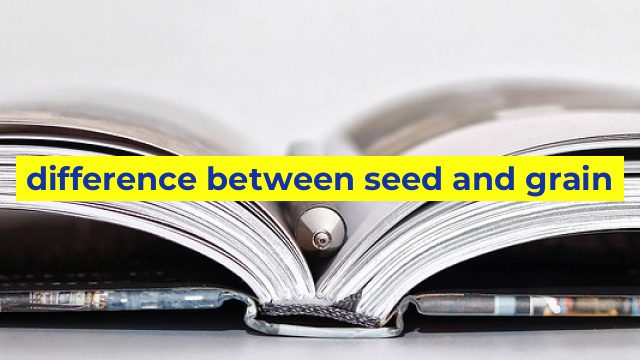Understanding the Difference Between Seed and Grain
If you’re someone who’s conscious about what they eat, you may have wondered about the differences between seeds and grains. It’s important to understand what sets them apart so you can make informed decisions about your diet.
What is a Seed?
A seed is the reproductive part of a plant that grows into a new plant. Seeds come in various shapes and sizes, and they’re packed with nutrients. Some examples of seeds include sunflower seeds, pumpkin seeds, chia seeds, and flaxseeds.
Seeds are typically high in healthy fats, fiber, protein, vitamins, and minerals. They’re an excellent source of energy and can help you maintain a healthy weight. Additionally, many seeds have anti-inflammatory properties that can reduce your risk of chronic diseases like heart disease and diabetes.
What is a Grain?
A grain, on the other hand, is a small, hard seed that grows on grasses. They include staples like wheat, rice, oats, and barley. Grains are nutrient-dense and provide a significant source of fiber, minerals, and vitamins.
However, some grains are also high in carbohydrates, which can lead to weight gain if consumed excessively. Processed grains, such as white bread and pasta, are also stripped of their fiber content, making them a source of empty calories.
Key Differences between Seed and Grain
While seeds and grains share some similarities, such as being high in fiber and nutrients, some key differences set them apart.
– Seeds tend to be higher in healthy fats, while grains are higher in carbohydrates.
– Grains are mainly used for processed foods like bread, cereal, and pasta, while seeds are often used as a snack, sprinkle or ingredient in food.
– Seeds have a harder, protective outer coating while grains don’t have an outer coating.
In Conclusion
Understanding the differences between grains and seeds can help you make better decisions about your diet. Both are nutritious and beneficial to your health, but it’s important to consume them in moderation. Adding more seeds to your meals is an easy way to boost your overall nutrition and get a host of health benefits. Additionally, choosing whole-grain products over processed ones can improve your heart health, reduce your risk of chronic diseases, and help you maintain a healthy weight.
Table difference between seed and grain
| Seed | Grain |
|---|---|
| Embryo of a plant | Fruit of a cereal grass |
| Can be eaten raw or cooked | Must be processed before eating |
| Can be grown into a new plant | Cannot be grown into a new plant |
| Examples: sunflower seed, pumpkin seed | Examples: rice, wheat, corn |

